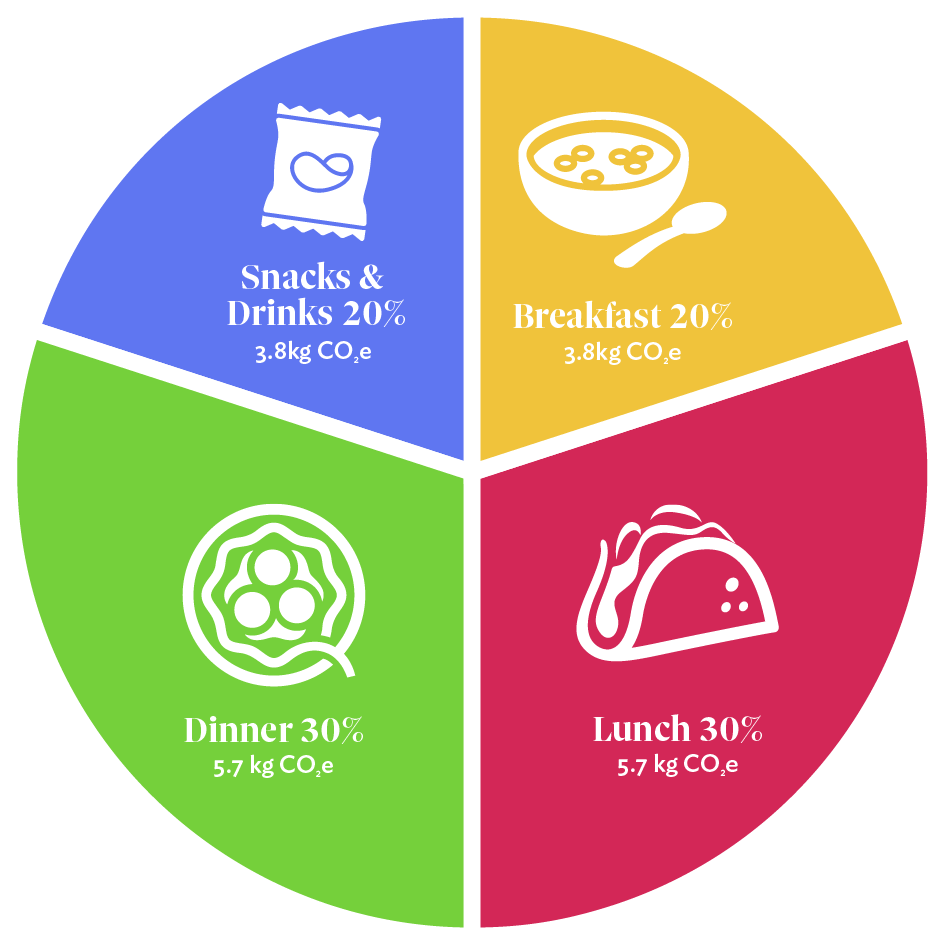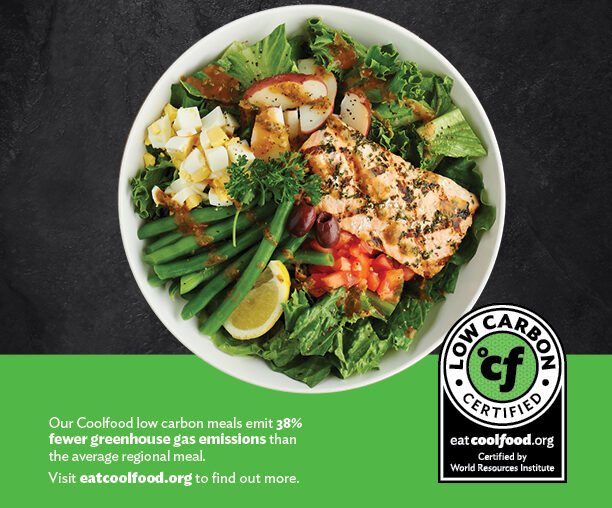Low Carbon Meals That Make a Difference
Coolfood is all about making it easy to fight climate change with your fork. By partnering with restaurants and food companies, we certify delicious, low-carbon meals that are better for the planet—and for you.
So...what does low carbon mean?
World Resources Institute (WRI) has created a daily carbon allowance for meals. This simple guide helps us all align our food choices with the 2030 Paris Agreement climate goals, making it easier to take climate action every single day. Every Low Carbon Certified Meal has emissions 38% lower than the average regional meal, ensuring it aligns with these allowances.
Daily Carbon Allowance
Maximum Daily Carbon Emissions from Food per person in North America 19kg CO₂

Only the best meals make the grade! 5 steps to become Coolfood certified.
- 1. Companies submit ingredients and recipes.
- 2. Coolfood provides detailed calculations on a per meal basis.
- 3. If a meal’s carbon emissions are below the carbon allowances, then they are eligible.
- 4. Meals are then run through the NutriScore calculator and only recipes in the A, B, C categories are accepted.
- 5. Certified meals then get to display Coolfood’s Low Carbon certification mark.
We Measure Everything
Every ingredient in a Coolfood Certified meal has been assessed.
- Analysis of the agricultural supply chain of every ingredient.
- Analysis of the land use to produce the ingredients.
- Analysis of the consequences of converting land from its natural state to agriculture.
Through our assessment we provide a more complete picture of the impacts that our food choices have on the climate.


